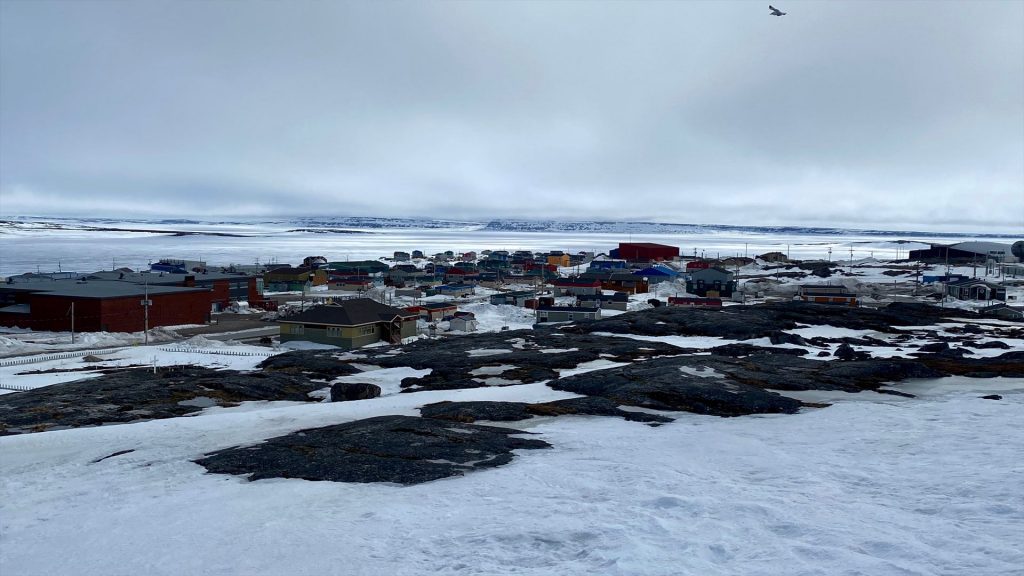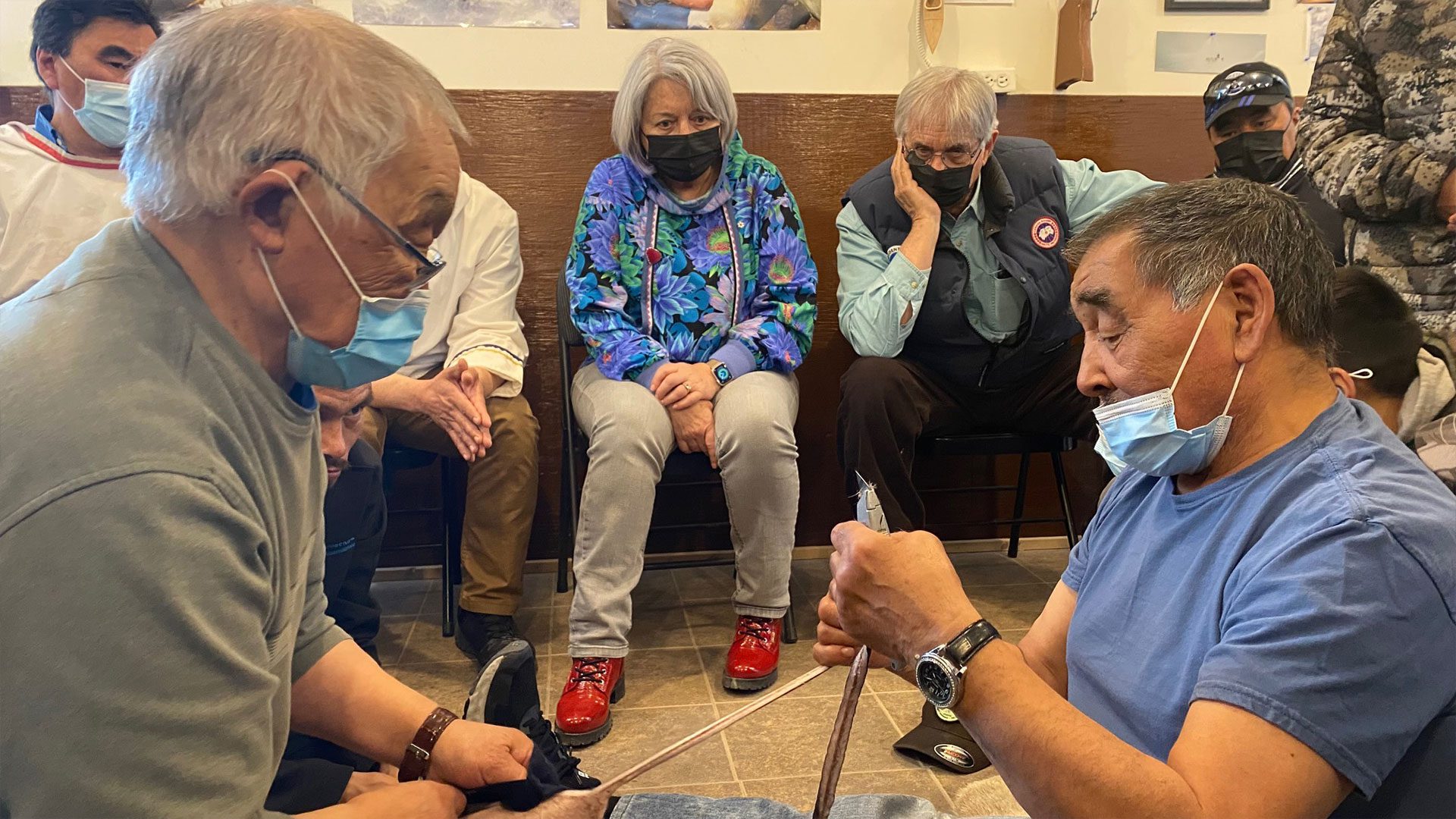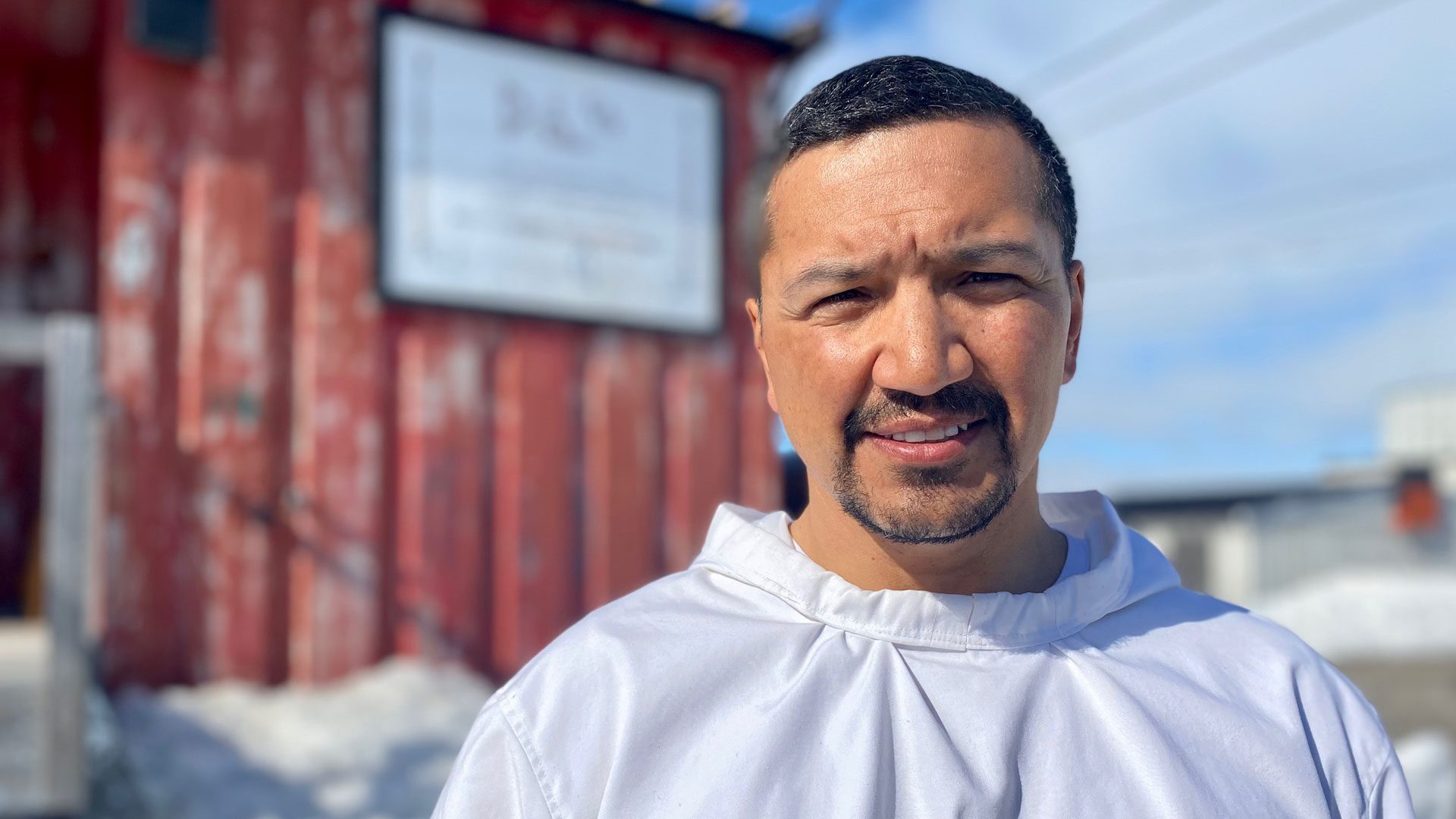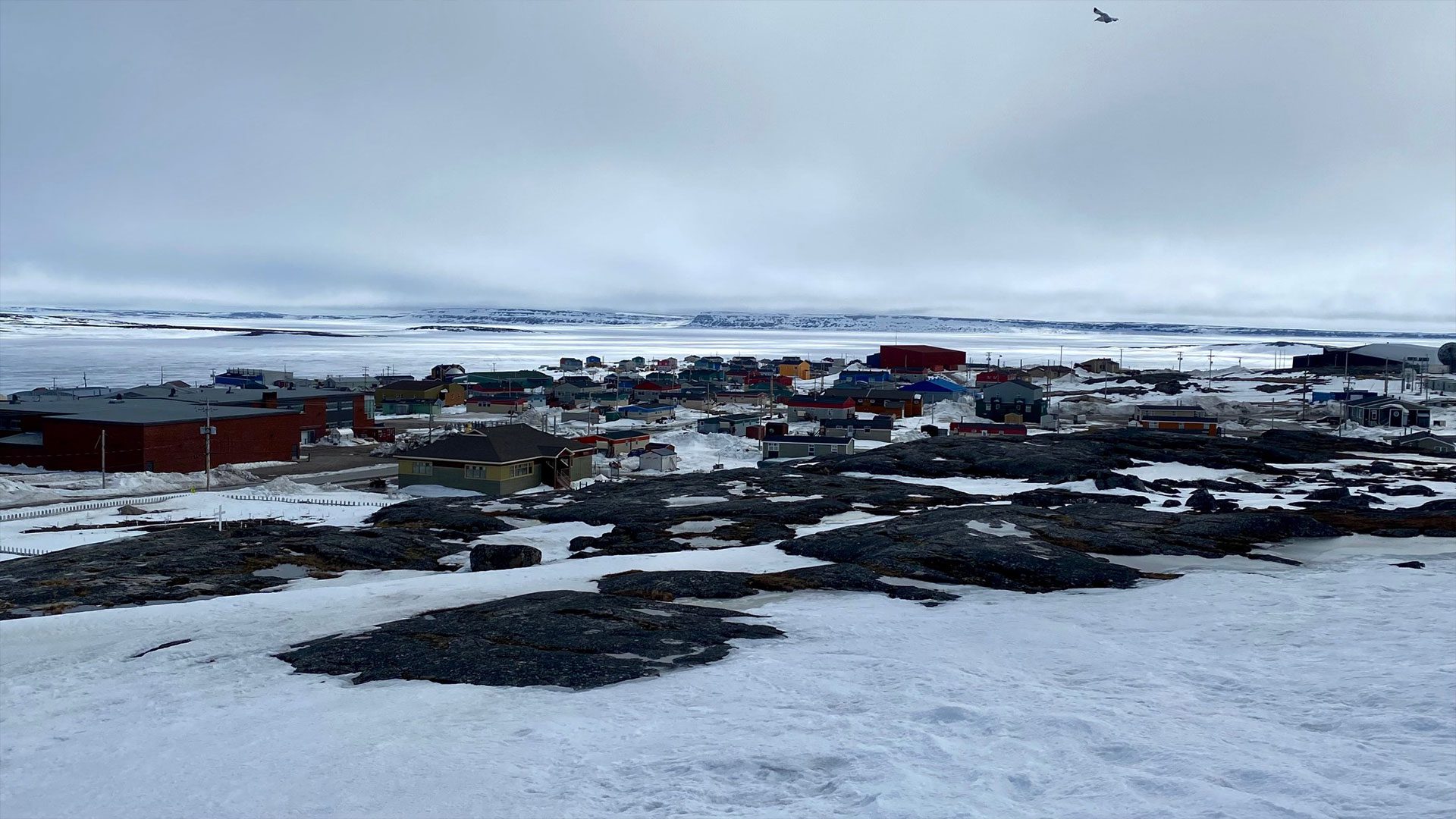
While seated on some cardboard on the floor, Simeonie Ohaituk glides his Exacto knife down a seal skin hide, making sure it stays straight and about the width of a thumb while his colleague sitting opposite him pulls the skin taut.
“We culture it to make a very thin rope,” says Ohaituk in Inuktitut while Charlie Nowkawalk translates for the crowd. The rope, Ohaituk explains, is strong enough to make a harness for dogs and even pull a bearded seal a “heavy, heavy animal”.
Ohaituk is being observed by a group of young men and boys who gather around and watch – as well as one special invited guest, Governor General Mary Simon, who is visiting the Inuit community of Inukjuak, located on the eastern shores of Hudson Bay as part of her five-day tour of her home region of Nunavik.
“We stopped using it [traditional seal hide rope] when we lost our dogs,” adds Ohaituk as his knife glides through the hide.
“Over the dog slaughter,” observes Simon, referring to the mid-1950s to late 60s government-mandated dog slaughter undertaken by the RCMP over supposed concerns of disease and population control.

Inuit were not consulted before the slaughter, which decimated the Inuit way of life here in the community of Inukjuak and elsewhere in the Nunavik.
“Those were hard days, [we] really admired the dogs, lived with the dogs,” says Ohaituk through Nowkawalk “When they were removed, a big chunk of our culture, of our identity was removed.”
Simon is visiting the Unaaq men’s association, where this demonstration of how to make seal skin rope is taking place.
“I don’t think there’s any other better time to learn from our elders, because as the elders are passing away, so is our history, and so are their stories,” says Unaaq assistant manager Tommy Palliser “You can’t learn that anywhere else.”
Since its inception in 2001, Unaaq’s mission has been to provide “a time and space” for their elders to teach. The goal is not only to help boys and young men learn the skills to hunt but to also instill a sense of pride and purpose.
“We first started because there was a lot of social issues, first of all, a lot of unfortunate suicides, so we banded together as men, we first started off as a small men’s group, and we just grew from there,” explains Palliser.
Once the hide is cut to a ribbon, Nowkalwak and Palliser stretch it from outside the door to nearly the other end of the building, about nine metres total.
“With have young boys starting with us, their only 9-10 years old and they’ve already learned how hunt and butcher a caribou,” says Palliser with pride.

Unaaq isn’t the only institution in Inukjuak working to preserve culture.
The Avataq Cultural Institute also received a visit from Simon, where they spoke to her about Inuktitut language preservation.
Among their recent endeavours is the translation of detailed maps into traditional Inuktitut names
“Nunavik means ‘Great Land’,” explains Avataq interim president Jeannie Nungak, pointing to a large map nearly covering an entire wall. On it are hundreds of Inuktitut names, detailing important campsites as well as other geographical areas of note.
Nungak says that the Inuktitut language is essential to the Inuit identity but that it is also in decline.
“It’s very important for them [the youth] because they are learning English and French in Nunavik and they getting more things from the south, [educational] materials and they are losing their own [language] of their ancestors,” says Nungak.
Read More:
‘Today was a day of hope’: Governor General’s tour of Nunavik includes visiting a family safe house
‘I just call her Mary’: Governor General Mary Simon goes home
While culture preservation may seem daunting for the community of about 1800, there have been some recent victories in Inukjuak.
“For the longest time we didn’t have any dog teams in the community, now we have eight dog teams in the community, some are hunting with the dogs now,” says Palliser, whose 20-year-old son Ray has a dog sled team of seven huskies.
Considering that an entire generation was traumatized when the husky population was wiped out decades ago, having a dog sled team now is an act of resilience.
“As much as we talk about the difficulties that the communities are facing, there’s also things that have happened that are good, good for the communities, and those aren’t well discussed, those aren’t well known, and we need to make sure that’s part of our conversation in Canada, is that Indigenous people are doing great things,” says Simon in an interview with APTN News.

According to Palliser, those good things Simon refers to are starting to spread.
In the last two years two communities south of Inukjuak on the Hudson’s Bay, Kuujjuarapik and Umiujaq, have created their own versions of Unaaq.
“I think it’s going to be important for all the communities to develop all their men’s associations so we can have a network to share our challenges, our issues, and also our ideas on how we can better support young men,” says Palliser with his son Ray by his side.
Simon’s tour of Nunavik ends today in Kuujjuaq.









